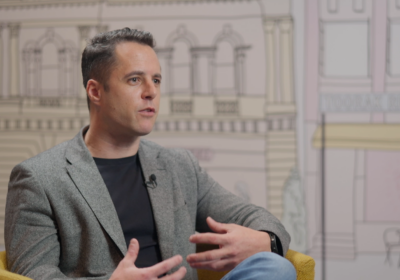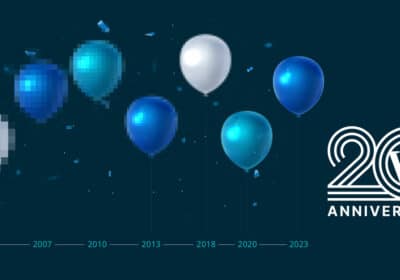Seamless and frictionless experiences are becoming table stakes for any brand that wants to engage consumers, but to really shine, marketers have to find a way to the consumer’s heart, according to experts at a recent industry conference.
Marketers are leveraging every tool, from cutting-edge neuroscience to old-fashioned testing and learning to find out what truly makes consumers love one brand over another, said speakers at the annual Forrester Customer Experience Forum held recently in New York. Emotions that spark brand love can make a crucial difference in business outcomes at a time of intense competition, said the experts.
Being customer-focused is “clearly the price of admission” now, said Harley Manning, VP, research director.

Forrester’s annual CX Index study found consumer expectations are rising, sometimes faster than marketers can catch up. The Index results showed the ranks of brands considered “poor” or “very poor” dropped slightly—but so did the brands at the top of the rankings, said Manning.
Forrester’s research found the rates of consumers who felt neutral about a brand dropped between 2016 and 2018 but those who felt negatively rose, said Michelle Yaiser, principal analyst. And there is definitely a relationship between quality CX, loyalty and brand preference, she said; customers who had excellent experiences were 2.8 times more likely to think a brand sets itself apart from competitors.
Many speakers agreed that being merely efficient or “frictionless” doesn’t cut it anymore. Companies are increasingly expected to anticipate consumer needs in order to provide that superior experience that makes them feel good about the brand.
“We want to get ahead of our customers,” said Lukhvinder “Lucky” Rai, director of operations, digital engagement, at Dish Network. The satellite TV company used artificial intelligence to ease the pressure on customer service, offering self-service options, chatbots and other 24/7 channels to help consumers solve problems and tie all those steps together before the situation escalated into a phone call to customer service, he said.
“If we were looking only at the call, we were missing all of the mess we were making before they made that call,” he said.
“Micro-aggravations”
That mess can be the deciding factor for a brand at a time when consumers can make choices easily between one and another. But many speakers noted that companies are often not set up deliver that delight that closes the sale.

“Every company will say they care about customer experience. And every company says ‘We’re a data-driven organization.’ Those things sometimes are in conflict,” said president and CEO Ernie Garcia III.
“All too often there’s a focus on the immediate measurables,” said Garcia. Meanwhile, happy customers can take a while to share their customer experience, so the feedback loop that improves the experience can be a long one, he said.
Carvana developed its “car vending machine” concept to reimagine the experience of car-buying because consumers hated the dealership part of the process, It had to start by reinventing the back office of the dealership, because the automotive industry’s economics don’t enable a good customer experience, he said.
Many brands are too focused on the functional side of the experience and not enough on how that affects consumers, said Joana van den Brink-Quintanilha, Forrester principal analyst. She noted Forrester’s latest research found customers are drawn to brands that provoke feelings of belonging, novelty, efficacy and trust.
By focusing mainly on functionality instead, brands create experiences filled with “micro-aggravations,” said Quintahilha. Such moments accumulate over time and are always shaping our opinions on brands, she warned.
Marketers should use tools such as ethnographic research, storyboarding, user stories, customer life-cycle maps and journey maps to “ask how your company fits into the customer’s life and use those insights,” said Quintanilha. Several marketers also noted the owners of the consumer strategy should try putting themselves in the customer’s shoes: “Almost mystery-shop your experiences strategy,” said Greg Marion, VP Enterprise Strategy at USAA, one of the top performers in the CX Index.

Jack Chou, head of product at Affirm, said the online credit platform measures everything constantly, running experiments with quantitative data and doing ethnographic research to learn from watching customers: “There’s like 9000 random rough edges in your product that you can only understand seeing people interact with your product,” he said.
Several speakers noted that even marketers of consumer products can forget they are consumers too. “We’re all customers,” said Alice Milligan, chief digital experience officer, US consumer bank at Citi. Milligan said she tests the bank’s services asks her employees to do the same. The combination of their feedback and that of front-line employees “gives you a rich sense of what you should be focusing on.”
“The digital user’s body language”
Neuroscience offers a few clues for marketers, said Liraz Margalit, head of behavioral research at Clicktale. The deciding factor to brand differentiation is the emotions associated with the brand, she said, citing Forrester research that found how customers feel has a bigger influence on loyalty to a brand than its effectiveness or ease of use, regardless of industry.
The interaction between emotion and memory are very important, said Margalit. Memory is tricky and can be altered by emotions, especially strong negative ones, she explained. In digital channels, emotions are shaped by the consumer’s prior expectations and their current mindset.
“If the actual interaction meets our expectations, this is considered to be a non-event,” and quickly forgotten, she said. If it exceeds expectations, “then we can talk about peak moments and delight” and it is saved into the consumer’s long-term memory.
Interactions and movements online can reflect the users state of mind, said Margalit. Using neuroscience, Clicktalk has observed and found five behavioral patterns in online shoppers—“the digital user’s body language,” according to Margalit: disoriented, lack of interest, exploring, mindful or focused.
Tracking those indicators, marketers can better understand events such as cart abandonment at a confusing checkout or exploring and focused browsing on fun content. For example, she noted how the neurological reaction to an autoplay video was confusion and frustration from the website user, suggesting the video should be a choice instead.
“Our brain did not develop as fast as our technology and one of our greatest human needs is for control,” said Margalit. Emotions evolved as an aid to make lifesaving decisions in early humans, and they remain a key factor in decision-making marketers should focus on, she said: “We are not living here in the age of technology, we’re in the jungle and we have to understand human needs.”





Join the conversation